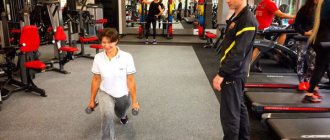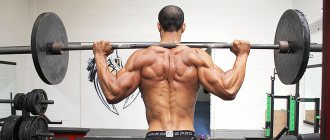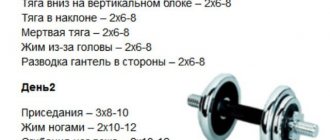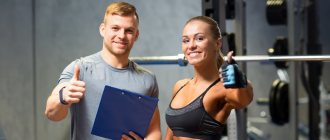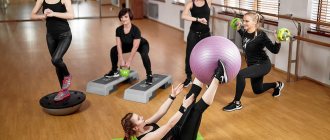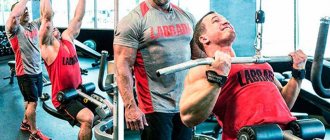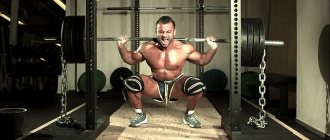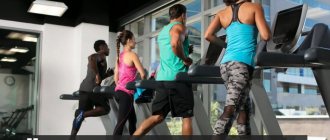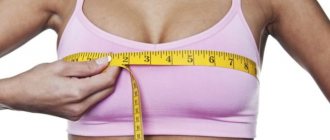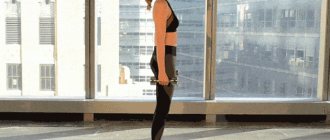Warm-up in football: exercises
Any workout should begin with a warm-up. It allows you to warm up all muscle groups and prepare the body for further stress.
Warm-up exercises:
- Jogging across the field
- Running exercises (running with high hips, shin sweeps, side steps, etc.)
- Stretching
The whole process takes about 15-20 minutes. After warming up, you can begin exercises with the ball.
Running exercises
Warm-ups need to be taken seriously. If you start playing without warming up, there is a high risk of injury. We talked about the most common injuries in football in a separate article.
Warming up
Planks: do at least three times a week. Lie on the floor, stomach down. Rest your elbows on the ground, bend your forearms forward. The head and torso must be kept straight. That is, the shoulders, hips, and ankles should be lined up in a straight line. Squeeze your buttocks for maximum effect. There is also a side stand. To do this, you must lie on your side and place your right (or left) elbow on the ground. Keep your body in a straight line. In general, it’s not much different from the previous exercise, just from the side. Belly down - 3 sets of 30 seconds.
1. Hold the position for 30 seconds;
2. Raise one leg up, hold it for 2 seconds, then release and lift the other leg. Alternate for 30 seconds;
3. Hold the position for 30 seconds. You can give yourself a minute's rest and begin doing the side stand.
Side stand – 3 sets of 20 seconds on each side.
1. Hold the position for 20 seconds on the right side. Repeat with the left side;
2. From the starting position, lift your right leg and hold it for 20 seconds. Repeat with your left leg;
3. Hold the position for 20 seconds on the right side. Repeat with the left side.
Ball exercises for football players
Football is a team game, so it is important to pay great attention to team interactions.
Here are some exercises with the ball in groups:
- Square
Playing square is one of the favorite exercises of football players.
Several players stand around the perimeter of the restricted area and play a pass among themselves. There is one or more drivers inside the zone. Their task is to take the ball or intercept a pass. After the tackle, the driver takes the place of the player who lost the ball.
Football players play square
To increase interest and speed of ball movement, the coach comes up with tasks. For example, if there are 10 passes inside the square, then the drivers do 15 push-ups. It all depends on the coach’s imagination. The number of players in a square can be different: 3+1 driver, 4+1, 4+2, 5+2, 6+2 and so on.
- Ball holding game
The players are divided into two teams, the area is limited by chips. When one team has the ball, the second tries to take it away. If the ball is recovered, the teams switch roles.
The coach can also come up with tasks. For example, allow football players to play with only 2 touches.
- Football game with various tasks
Such exercises are usually carried out in reduced formations (6 on 6, 7 on 7, etc.). Several small gates can be installed. The goal is to score a goal into one of the opponent's goals.
This exercise develops speed of thinking. When a large number of players have accumulated at one goal, the players must turn the game around and attack the other goal.
- Football in pairs
Football players are also divided into two teams, find a partner and join hands. They perform all movements together. A very useful and fun exercise.
The ball exercises listed above allow football players to improve teamwork. Limited space and high density forces players to make quick decisions.
A football coach from Belgium shows 5 technique exercises
This video is already six months old. In winter (it was +30 in the shade) in the Emirates, one of the most pleasant
and open
teams in Russian football allowed a “Championship” correspondent to attend a morning training session. Trying to shoot, photograph and play football at the same time seriously affected the quality, so the material in the form in which
It was originally planned but did not take place. However, we believe that some of the video lessons from that training day may be useful to you. And that's why.
Recently, the system of training young Russian football players has been criticized. Among the problems, the focus is not on the creative education of football players, but on powerful team play that produces results. In particular, from an early age, children are taught line defense, a backup system and a rational manner of attacking actions. At the same time, we saw coaches specializing specifically in technology only in the Krasnodar academy and... in the adult team of Krylia Sovetov. At Frank Vercauteren's
This work is carried out by
Johannes Visser
, who trained almost half of the current Belgian national team.
Especially for the “Championship,” he showed five of the simplest adapted (that is, useful specifically for the game, and not for the juggling show) technique exercises.
“This complex develops basic abilities,” Vercauteren said, leading me to Visser. – If you spend half an hour a day and do the exercises, you will definitely handle the ball better than anyone else in the yard.
- To be honest, when I arrived, some of our football players could not do these simple things! Visser added. And I didn’t understand whether he was joking or not.
So, five simple exercises, which are shown by the “wooden” correspondent of the “Championship”.
Exercise 1. Ball rolls
Visser:
“The point is simple. You throw the ball with the inside of your foot and then roll with the sole of your foot.”
Vercauteren:
“Look forward, not at the ball or your feet. Feints for the sake of feints are pointless. Assess the situation on the field. Head up – otherwise the exercise makes no sense.”
Visser:
“Try to make it more difficult. Roll the ball with your sole without additional touches. Look at the field and look for a partner: left, right, left, right.”
In fact, already the 3-4th time it turns out much better.
Exercise 2. Working with the outside of the foot
Visser:
“You again throw the ball with the inside, but you roll with the outside. This is an important element - it can confuse an opponent who buys into the first move.”
Vercauteren:
“Oh, yes, here the left leg is wooden. All clear. A very common problem that needs to be addressed.”
Exercise 3. Coordination
Visser:
“It is an ideal technical element to improve stability when handling the ball.”
The legs are not at all ready for these exercises, but, again, 10-15 repetitions - and serious progress is felt.
Exercise 4. Quick foot
Visser:
“As quickly as possible, change the direction of the ball three times with one foot.”
Vercauteren:
“Did I tell you that my left leg is made of wood?”
Exercise 5. “Popov’s Feint”
Visser:
“The next one is more difficult. You pass the ball behind your foot and change direction..."
Egorov:
“...I would call this exercise a feint by Ivelin Popov, because in the Europa League for Kuban he performed it very confidently.”
Exercise 6. Bonus
Visser:
“The most difficult exercise. When you learn how to perform this at maximum speed, you’ll join us in our double team.”
The legs can’t keep up with the head or vice versa – it’s not so important. The main thing is that almost nothing happens right away. Try it yourself and see for yourself.
To perform these exercises, you only need a ball and a small piece of dirt. For example, this is how I whiled away some free hour in France.
Visser's rating:
“It’s really not all that bad for you. Normal technical level, especially for a big guy. Do these exercises every day - you will definitely improve. And be sure to show it to others.
Here I am, showing you. “The Wings coaches and I will be glad if someone is interested in them and turns out to be useful.”
PS
It helped me personally. Scored a goal with both his foot and his head))
Strength exercises for football players in the gym
A football player must be strong enough to confidently fight an opponent, make quick runs and deliver strong shots on goal. To do this, you need to do strength training in the gym.
Here are some exercises for football players in the gym:
- Bench press
- Raising the legs while resting on the elbows
- Crunches on a fitball
Football players perform exercises with barbells
Currently, not a single professional athlete can do without a gym; this is a necessary component for further development in sports. Football requires strong and resilient legs, and indeed the whole body, so I want to offer my own version of training football players in the gym. The main emphasis of the exercises is, of course, on the legs, in different planes and different modes of operation. These two workouts will help you gain strength and endurance not only in your legs, but in your entire body!
How to start?
The weight of the load, if any, must be selected for the number of repetitions, taking into account what the load should be, i.e. if we need to do a Bulgarian split squat 3 sets of 12 times with a weight of 70-80% of the max (of the maximum), then we take a weight that we can do for about 15 times, but we do 12! This will be 70-80% of the maximum.
Do not forget that the weights of the weights are selected according to the number of times, this is important.
How much and how to do it?
The program lasts 5 weeks. Alternate workouts 1 and 2, increasing the working weight of the apparatus each subsequent workout by at least 2.5 kg, while trying to complete the same number of repetitions. 2-3 workouts per week are enough, provided that everything is done well.
| Exercises | Approaches | Number of repetitions | Working weight | Rest |
| Workout 1 | ||||
| 1) Bulgarian split squat with a barbell on the shoulders | 3 | 12 | large (70-80% of max) | 2-3 min |
| 2) Squats with a low barbell on the bench | 3 | 6 | large (70-80% of max) | 2-3 min |
| 3) Pull-ups with a direct grip (position your hands slightly wider than your shoulders) | 2 | max | without weighting | 2-3 min |
| 4) Standing Dumbbell Shvung | 3 | 10 | 2-3 min | |
| 5) Jumping from the platform on the “toes” | 10 | 15 seconds | No | 10 seconds between sets |
| 6) Side plank on the floor | 3 | 2 minutes | No | 2 minutes |
| 7) Raising the legs while resting on the elbows \(or) raising the legs while hanging \ lifting the legs in the shoulder straps | 3 | max | No | 2-3 min |
| Exercises | Approaches | Number of repetitions | Working weight | Rest |
| Workout 2 | ||||
| 1) Classic barbell deadlift (from the floor) | 5 | 6 | submaximal (80-90% of max) | 3 min |
| 2) Dumbbell Royal Row | 3 | 15 | average | 2-3 min |
| 3) Reverse grip pull-ups | 3 | 15 | weighting for number of repetitions | 2-3 min |
| 4) Standing barbell press | 3 | 10 | 60-80% of max | 2-3 min |
| 5) Alternating side lunges with dumbbells | 3 | 15 | average | 10 seconds between sets |
| 6) Elbow plank with alternating leg raises | 3 | 2 minutes | No | 2 minutes |
| 7) Twisting on a fitball | 3 | max | No | 2-3 min |
1.1). Bulgarian split squat with dumbbells - the knee of the front leg should be above the heel, the body vertical;
2.1). Squats with a low barbell on the bench - the knees should not go beyond the line of the toes, transfer the body weight to the heels;
3.1) Pull-ups with a straight grip - grip slightly wider than shoulders, stretch your chest towards the horizontal bar, emphasis on the middle of your back;
4.1). Standing dumbbell press: dumbbell press with an additional push from the legs, be sure to absorb the lowering of the dumbbells by bending your knees;
5.1) Jumping from the platform on the “toes” - all work on the toes of the feet, maximum acceleration for 15 seconds;
6.1). Side plank on the floor - the elbow is strictly under the shoulder joint, the legs are a continuation of the body, the whole body is in one line;
7.1). Raising your legs while resting on your elbows, or hanging, or in Beres straps - try to keep your abs tense throughout the entire exercise (any exercise), to achieve this, do not completely straighten your legs at the bottom point of the exercises.
1.2). The barbell deadlift is classic - the back is straight, the abs are tense, try to work more with your legs than with your back;
2.2). Royal deadlift - do a squat on one leg, trying to keep your back straight;
3.2). Reverse grip pull-ups - grip shoulder-width apart, look up and don’t lower your gaze throughout the entire exercise;
4.2). Standing barbell press - work upwards only with your hands, keep your body vertical, lowering, shock-absorbing with your knees;
5.2). Alternate lunges to the side with dumbbells - transfer the weight to the heel, stretch your tailbone back, the knee should not go beyond the toes, feet, by the way, point your knees forward;
6.2). Plank on the elbows with alternate lifting of the legs - the whole body is in one line, the abs are tense, the elbows are under the shoulders, lifting the legs up using the gluteal muscles, while the body is motionless;
7.2). Twisting on a fitball - lie down on a fitball so that your knee is above your heel, your abs are constantly tense, twist, lifting only your shoulder blades, while “rolling” your “pelvis” back, hands behind your head, elbows to the side, exhale at the moment of maximum tension.
Strength exercises for football players at home
Not all football players have the opportunity to regularly visit the gym. Good results can also be achieved by practicing at home.
Neck exercises
- Performed independently. Hands behind your head. Head tilts back. Resist with your hands.
- Find yourself a mate. The first number takes the second by the head and tries to tilt it towards him. The first one resists.
Exercises for arms and shoulder girdle
There are many exercises to develop arm and shoulder strength. Here are some of them:
- Pushups
- Pull-ups on the bar
- Done in pairs. Passing a medicine ball from hand to hand.
In previous articles we talked about the correct daily routine and diet of a football player. These are important components of being a professional football player. There you will find a lot of useful information.
Ab exercises
- Scissors
- Lifting the torso, while the partner holds the legs
- Lying on your back, raise your legs straight, move them behind your head, and then slowly return to the starting position.
- Performed in pairs. The first number lies on his back. The second one stands at the head of the first one. The first number holds onto the partner's heels and performs a straight leg lift. The second one pushes the legs back. The first one is resisting.
Abdominal exercise in pairs
Exercises to strengthen your torso
- Legs wider than shoulders. Tilts of the torso towards the left, right leg and towards the middle.
- Feet shoulder width apart. Turn the torso to the sides.
- Performed in pairs. Partners hold hands with their backs to each other and bend to the sides.
Exercise order[edit | edit code]
After choosing a scheme for performing approaches in training, you need to correctly arrange the exercises. First of all read:
Choosing exercises in bodybuilding
Remember the main thing: first you need to do exercises that load the central nervous system more, then less intense ones. For example, squats should be in the program before leg extensions. There may be exceptions to this rule if you need to first fatigue the lagging muscle by loading it with an isolating movement before a complex one.
So choose exercises for the muscle group you are working and arrange them in order of decreasing difficulty. For example, you took the following exercises to train your chest:
- Crossovers on blocks
- Bench press
- Bent dumbbell press
The correct arrangement would be:
- Bench press
- Bent dumbbell press
- Crossovers on blocks
A simple rule: first do an exercise from the main group, then an additional one, then an auxiliary one, then a corrective one. If you have two exercises from the same group in your program (for example, two main or two additional), do the one with the most weight lifted first.
But the order of the exercise is also influenced by the scheme of approaches (sequential, alternating, circular).
If you consistently do all the exercises for one muscle group, then move on to another group, your workout will look like this:
- The main exercise for the pectoral muscles
- Additional exercise for the pectoral muscles
- Assistance exercise for the pectoral muscles
- The main exercise for triceps
- Additional exercise for triceps
- Assistance exercise for triceps
This can be done if during training you work one large muscle group (chest, back, quadriceps) and one or two small ones. If you are working two large muscle groups (for example, the chest and back), this is not the best option, since the central nervous system will already be exhausted by the time you finish the first muscle group and move on to the second.
If during a workout you are working two or more large muscle groups, or the whole body, it is better to arrange the exercises according to load. First, collect exercises by category (main, additional, etc.), then arrange them so that the large muscles are worked first. For example, you chose the following exercises for a full-body workout:
- Bench press
- Standing press
- Pull-ups with a grip
- Front Squats
- Romanian deadlift
- Barbell curls
All of them are from the category of main exercises, so all that remains is to arrange them in accordance with the size of the working muscles:
- Front Squats
- Romanian deadlift
- Pull-ups with a grip
- Bench press
- Standing press
- Barbell curls
If you also took additional exercises, then follow the same rule: first distribute the exercises into categories, then arrange them in each category depending on the size of the muscle being worked. For example, you chose the following exercises:
- Bench press (main)
- Leg press in the simulator (additional)
- Bent-over barbell rows (main)
- Seated dumbbell press (optional)
- Wide grip deadlift (main)
- Hammer curls with dumbbells (optional)
First, collect by category.
Main:
- Wide grip deadlift
- Bench press
- Bent-over barbell row
Additional:
- Leg press in the simulator
- Seated dumbbell press
- Hammer curls with dumbbells
Then you arrange them within the category according to the size of the muscle group:
- Wide grip deadlift (main)
- Bent-over barbell rows (main)
- Bench press (main)
- Leg press in the simulator (additional)
- Seated dumbbell press (optional)
- Hammer curls with dumbbells (optional)
If you are using an alternating pattern, which is best for antagonist muscles, first divide the exercises by muscle group, for example, in a workout you work the chest and back with the following exercises:
Chest muscles:
- Dumbbell flyes lying on an inclined bench with your head down
- Bench press on an incline bench with your head down
- Incline Dumbbell Press with Head Up
Back muscles:
- Upper pulley to chest
- Bent-over barbell row
- Bent over dumbbell lateral raises with support
The correct order of execution for each muscle group:
Pectoral muscles:
- Bench press on an incline bench with your head down
- Incline Dumbbell Press with Head Up
- Dumbbell flyes lying on an inclined bench with your head down
Back muscles:
- Bent-over barbell row
- Upper pulley to chest
- Bent over dumbbell lateral raises with support
Since the training is carried out according to an alternating scheme, the general order of performing the exercises will be as follows:
First pair:
A1. Incline barbell head down press A2. Bent-over barbell row
Second pair:
B1. Dumbbell press lying on an inclined bench with your head up B2. Upper pulley to chest
Third pair:
IN 1. Dumbbell flyes lying on an inclined bench with your head down B2. Bent over dumbbell lateral raises with support
Finally, if you're doing circuit training, you have several options for how to arrange your exercises depending on your goal.
If your circuit training is focused on bulking or strength (relatively long rests between sets), you do the same thing as a sequential circuit: first group the exercises into categories, then arrange the order within the group.
In lactic acid circuit training for fat loss, where you move from exercise to exercise with little or no break, the metabolic system is working more than the nervous system, so the placement of exercises becomes less important.
However, it is still better to arrange the exercises in such a way that they do not overlap each other, preventing you from working with full efficiency. For example, if you start a workout with a seated dumbbell press, then following it with a bench press variation is not a good idea, since the same muscles will be heavily involved.
Exercises to develop speed in football
Speed in football includes:
- Starting speed
- Running speed
- Speed of decision making
Exercises to develop speed are best done immediately after warming up, when the players are not yet tired.
Here are some exercises:
- Shuttle run (2x10 m, 4x5 m, 4x10 m, 2x15 m)
- Dribbling the ball quickly, stopping abruptly at the signal and accelerating forward without the ball
- Leg Frequency Exercises Using Chips
In the following video, the author shows useful exercises for quick feet. I advise you to look.
In one of the previous articles we talked about endurance in football and how to develop it. You can view the materials by following the link
